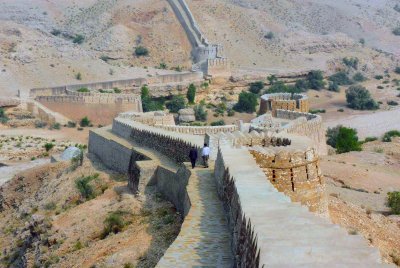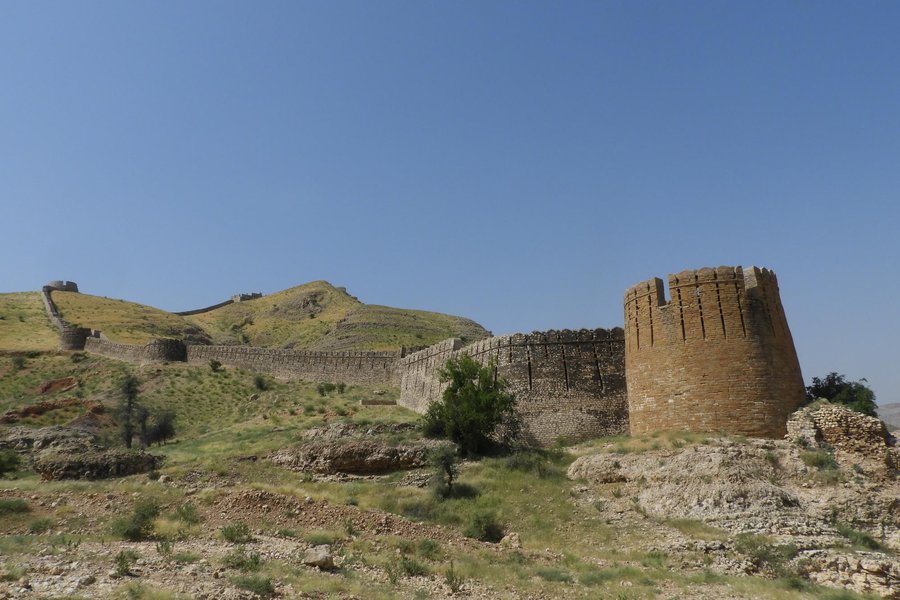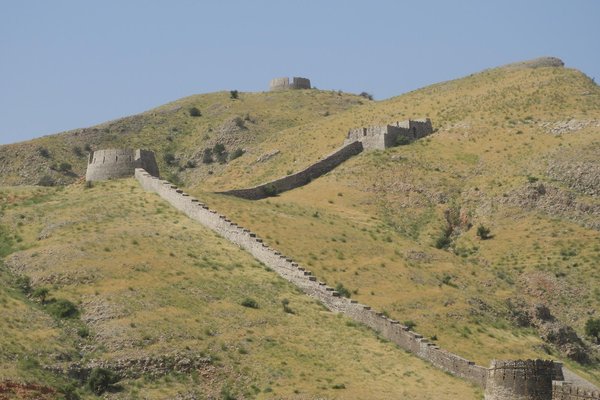Pakistan
Rani Kot Fort, Dadu
Site Info
Official Information
- Full Name
- Rani Kot Fort, Dadu (ID: 1284)
- Country
- Pakistan
- Status
-
On tentative list 1993
Site history
History of Rani Kot Fort, Dadu
- 1993: Added to Tentative List
- Added to tentative list
- 1984: Rejected
- Not of universal value
- Type
- Cultural
- Criteria
Links
- UNESCO
- whc.unesco.org
All Links
UNESCO.org
- whc.unesco.org — whc.unesco.org
Community Information
- Community Category
- Secular structure: Military and Fortifications
Travel Information
Recent Connections
News
No news.
Community Reviews
Show full reviews
The rusty hand painted sign at the turning was intriguing - “Sindh Culture and Tourism Department. WORLD’S BIGEST FORT RANI KOT. 2500 Labours had prepared FORT RANI KOT 22 miles during 3-4 years about (before) 325 BC. NOT ACCURATE” (sic).
We were travelling north from Hyderabad on the West bank of the Indus towards Moenjodaro – the T List site of Rani Kot fort lies around 30kms west from the main highway into the mountains of the Khirthar National Park. The Indus valley is flat and largely well irrigated (with the help of one of the World’s largest irrigation systems) all the way up the length of Pakistan but, a bit like the Nile, in Sindh at least it doesn’t take that long if one sets off at 90 degrees to reach mountain and desert. The road is surfaced to the fort now – various sources still say that a 4x4 is needed. We saw no other traffic along the way apart from a few tribes people walking with their goats and a couple of camel riders. Our guide remembered a few years earlier getting his vehicle stuck in the sand in the summer heat and having some considerable difficulty in summoning assistance – this is quite wild country
Then, what is called “The Great Wall of Sindh”, comes into view snaking its way across the hills in a way certainly very reminiscent of the classic photos of the Great Wall of China. …
Keep reading 0 comments
As-salamu-alaikum(Hello),
I visited this site on 26th December 2009.This site is 270 kilometres north from provincial capital Karachi.A metalled road leads one to site in prefereably 4*4 vehicle,although 4*2 may also suffice.It seems to have recently been repaired.It is no doubt a testimony to great human effort.The fortress inside is similar in design to that of Kotdigi fort.It was realy a special day for me.There are no entry fees.Food should be taken along as there is asmall tea-serving `Gabol Hotel' near the fortress.There are about 40 houses of Gabol community who do farming in the bed of nearby rainwater channel.
The fort is so widespread that it can not be seen in one or two days.Its history needs to be checked as it has been written on a board at the Sann-Raneekot turning point that the fort was constructed in or about 325BC.
It is not only a place of historical value but a very scenic also.The high mountains,the greenary by cropping and the thought as to how would this fort have been built hundreds of years ago when there was no machinery makes it a monument of great human contribution to this world.
I consider the fort to have been constructed by some technologically advanced people of unknown past.I do not understand why it has not yet been declared a World Heritage Site.I would strongly recmmend its declaration as world heritage.
Keep reading 0 comments
Rani kot really presents its own world. But, unfortunately, Rani kot, largest and one of the oldest forts of the world, is still waiting for its final conclusion. Hafiz Abdul sattar Korejo, my father, has also compiled his research in the form of book. Book, DUNIA JEY KADEEM AJAAIBAT MUNJHAN HIK AJUBO RANI KOT YA RAANI KOT, may lead us towards new history of Rani Kot. It must be refered....
Keep reading 0 comments
